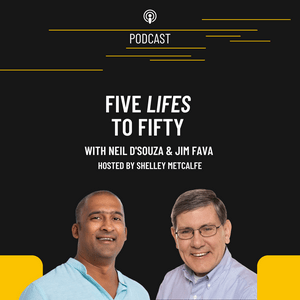Episode 15: Chemours’ Jenny Liu on the Power of Chemistry to Shape a Sustainable Future
In this episode of Five Lifes to Fifty, we sit down with Jenny Liu, Head of Sustainability for the Advanced Performance Materials business at Chemours. Jenny takes us inside the world of chemistry — not just as a science, but as a powerful enabler of sustainability, innovation, and everyday life. From electric vehicles to semiconductors and the hydrogen economy, we explore how advanced materials are quietly shaping the future, and how Chemours is leading the charge through bold sustainability goals and data-driven decision-making.
In this Episode
Shelley: I'm wondering if you could just tell us how you see it and tell us more about the advanced performance materials category that you work in.
[00:59] Jenny: Thanks so much, Shelley. It's a great question. You know, Chemours is a global company and we provide trusted chemistry to make lives better and to, you know, really help communities thrive.
[01:10] And I don't think that many people realize the role that chemistry plays in their everyday lives, our everyday lives. You know, more than 95% of all manufactured goods are touched by the business of chemistry.
[01:24] So really, chemistry is essential for everything that we depend on in modern society. And I believe it's really essential for decarbonization as well. If you think about the computers that we're speaking into, your cell phones that you use for stay connected to the world, but all the semiconductors and advanced electronics that underlies that and enables that,
[01:45] right? And then as again, as we head towards green economy, electric vehicles, batteries, hydrogen economy, you know, ultimately and you know, all the electrolyzers and fuel cells, so we make the membranes and the materials that underpins all of that and really brings that to life.
[02:02] A little bit more about Chemours. You know, innovation really is at our core, so we're focused on how we can make our products and applications, how they can really enable sustainability, not only in terms of our own operations, but but also for our customers.
[02:16] So we tend to have very high-performance materials that our customers use because they need them in the application, whether it's, you know, chemical resistant, temperature resistant for the electrical properties, inert.
[02:26] So they'll use them to solve their problems, which are usually very high-performance application needs. But then also those are enabling things to make society better and to reduce environmental footprint.
[02:38] So we have three businesses. We have a thermal solutions and refrigerant business so that's refrigerants, heat pumps, et cetera. We have our titanium dioxide pigments business. And so that's coatings and performance, coatings and materials and paints.
[02:53] And then we have the advanced performance materials business for which I lead sustainability. You know, some of the brands you might know, you know, Teflon, Krytox, Nafion, these are high performance materials that go into critical medical applications, electronics, we talked about some of the consumer advanced electronics, clean energy, electric vehicle batteries. The hydrogen economy is a big growth area. And then a lot of areas of transportation.
[03:18] So whether it's a safety feature on an airplane, for instance, or the space shuttle, or many, many valves and hoses and other sensor coatings and things that underpin automotive, you know, both a traditional combustion engine as well as a lot of materials in the EV space. Those are the types of...
